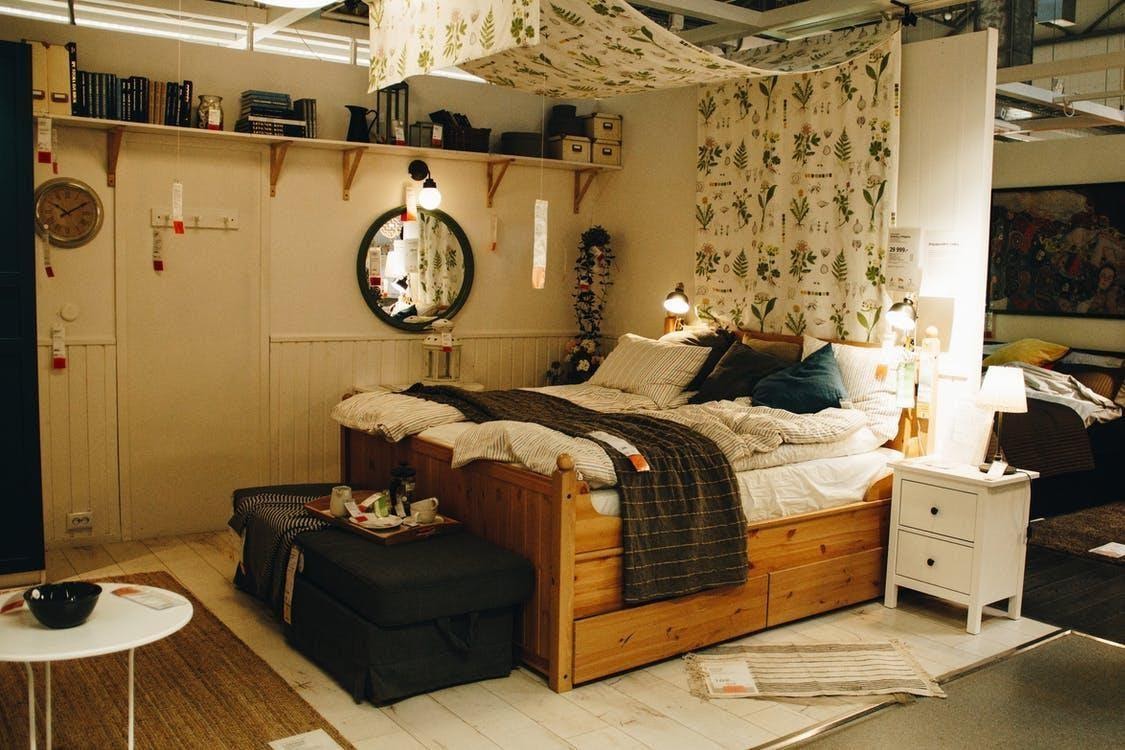Adults need at least seven or more hours of sleep each night in order to function properly. According to the Centers for Disease Control and Prevention, more than 3% of us, however, are not getting enough sleep, and our dormitories could be partly to blame. But thanks to growing support and the abundance of information on sleep habits and medicine, there is a growing awareness of the importance of getting quality sleep each night.
Many individuals are choosing to make form sleep a top priority as they realize that they can accomplish it by maintaining a bedtime routine, eating sleep-friendly foods, exercising regularly, and meditating before bedtime. With that in mind, there is an aspect of the sleep routine that still requires attention – namely, the sleep environment. All too often, we tend to underestimate the importance of the sleeping environment is getting enough sleep.
Many of us still use our dorm to browse the internet, watch Netflix, and a wide range of other activities not associated with sleep. Because sleep is a vital tool without which none of us could function properly, it’s time to start looking at how your sleeping environment impacts your sleep quality and approaches to improve it.
General Room Environment
This might depend on everyone’s taste and needs, but a decluttered bedroom with a tasty décor that feels calming and welcoming can work wonders for your sleeping routine. Besides sleeping and sex, you should try to avoid anything that’s too challenging for the mind. If you have stressful activities such as paying the bills or working, we advise you to change the room.
Upgrade Your Dorm Bedding
According to the National Sleep Foundation, advise us to wash our sheets once a week if we want more relaxing nights. Also, replacing your pillows every two years and looking for the best mattresses every 7 to 9 years will reduce the stiffens and the ache you woke up every day with.
If you and your spouse happen to have different sleep preferences, consider blankets for each side of the bed. Also, making your bed every day can also improve your sleep quality as research has shown that individuals who make their bed in the morning are 19% more likely to sleep tight at night.
Sounds sleep requires darkness
Brandon Peters, an M.D trained in neurology and clinical sleep medicine at the University of Minnesota Medical Center, showed how our body and mind’s natural circadian rhythm tend to follow the dark-light cycle. That said, the amount of light you have in your will undoubtedly impact your sleeping quality.
But what happens when we can’t follow up with our natural sleeping cycle. The latest technological developments and our modern lifestyles have disrupted us from calm and dark environments that our bodies need for rest. These modern devices are smartphones, digital clocks, television, and computers which can light up your room and interrupt your REM sleep. Luckily there are some solutions you can use in your bedroom to hide computers and televisions. For instance, armories can hide some of your devices like computers and televisions and even use vintage open-faced alarm clocks instead of noisy and very bright digital alarm clocks.
Also, if it’s important for you to have your smartphone within your reach, make sure you at least hideaway in a side table drawer.
Temperature
Your room temperature is absolutely vital for your sleep quality. Before we fall asleep our body’s temperature drops down as it prepares itself for slumber. Keeping your room at a lower temperature, somewhere between 60-70 degrees, will aid in cooling the body. Also, sleeping naked is known to increase your chances of sleeping comfortably and soundly as it can keep your body temperature at a normal level.
As you can see, there are several things that can rob you of sleep. Luckily, most of these issues can be solved by practicing good sleeping habits and maximizing your sleeping environment.
Soothing sounds and colors make for a good night of sleep
Although vibrant and bright colors can be truly enjoyable, sometimes it is best not to have them within a bedroom, especially if you have problems sleeping. As an alternative, you can use calm and soothing colors like mutated greens, blues, and pastels which are more calming and peaceful. If you seek out to incorporate more intense colors in your sleeping environment, use them to accentuate design elements, pillow, or within the artworks.
Not only colors can have an impact on your mood and sleeping quality. Soothing sounds too can promote sleep – sounds like soft wind chimes, a babbling brook, or crickets’ chirping. You can use your smartphone, a CD player, or any other electronic device that works- if you prefer the real deal, try to
hang some wind chimes outside or window or place a small fountain in your bedroom to create a more tranquil environment.
Declutter to relieve anxiety
It might sound counterintuitive, but a messy bedroom will never look or feel comfortable. It is suggested that too much clutter may even cause sleep deprivation.
A heavily cluttered room is also considered a huge feng shui no-no and it makes much sense why clutter can cause uneasiness in any room. Try to maintain your bedroom as clutter-free as possible so you’re not worried about tripping over something when you go to sleep or look for something important.
There are numerous storage options you can use in your bedroom or wardrobe that will tackle the mess, which is affordable and appealing enough too.
It’s true, some of these options can help you sleep better at night, but it matters a lot how you choose to put them into practice. For instance, making your bed every morning might seem like a useless thing you can do in the morning, but studies have proved otherwise. Making your bed regularly ensures a cleaner bedroom environment that can strongly influence how well you sleep.
